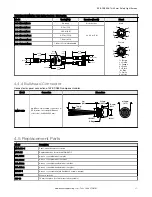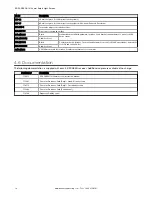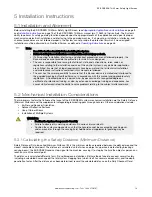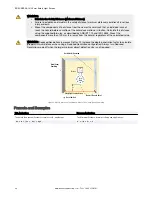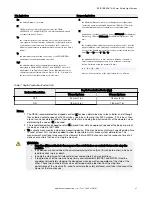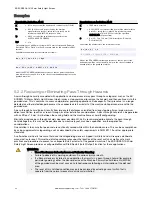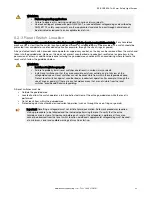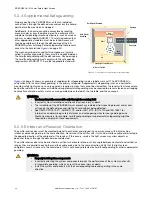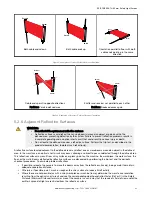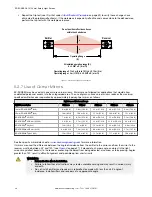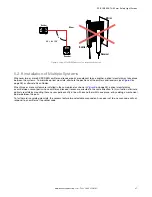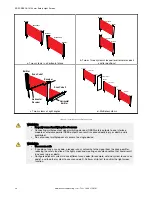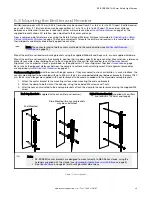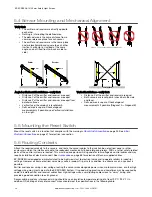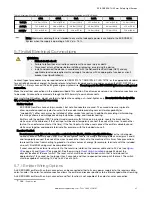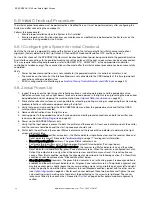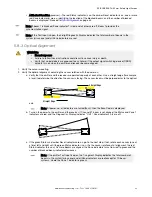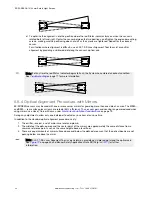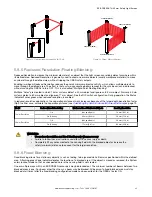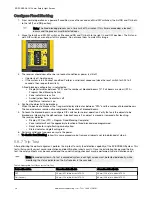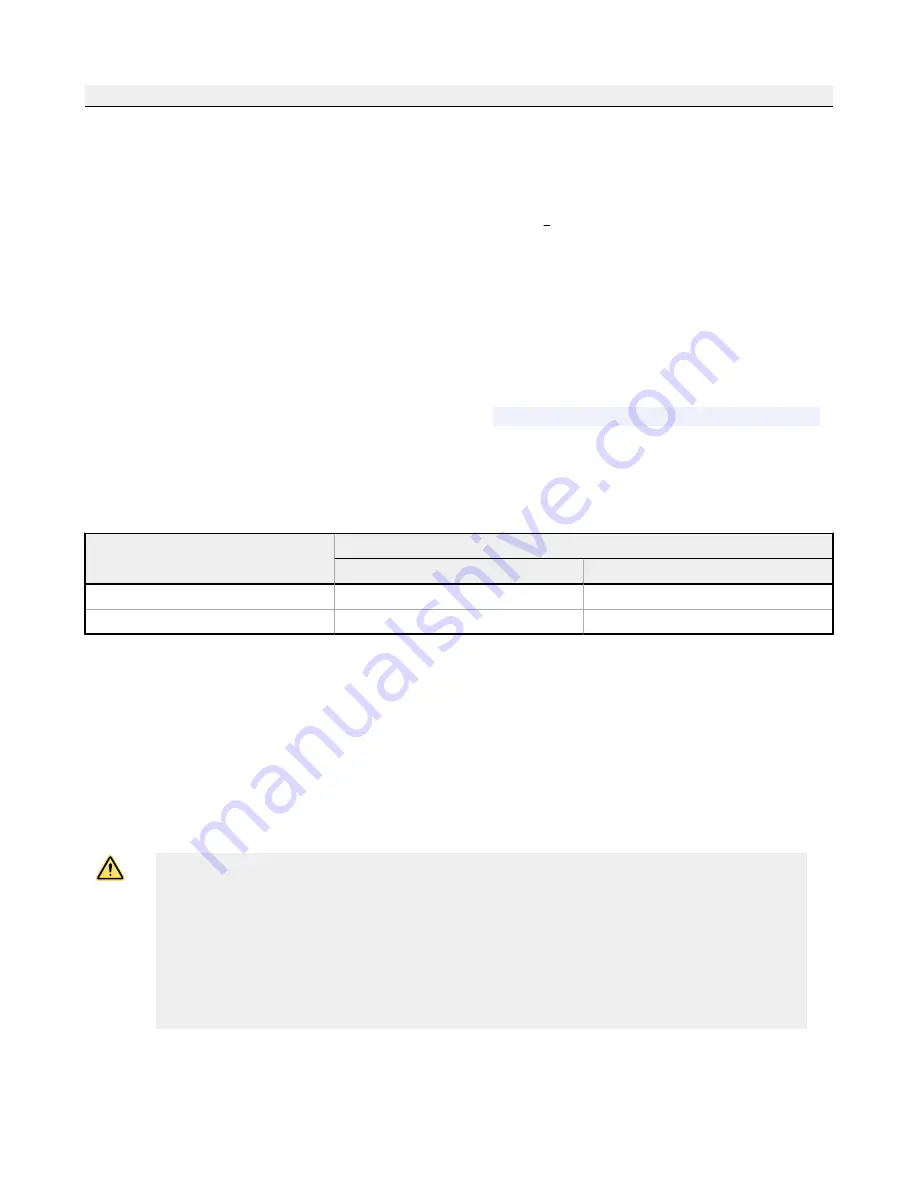
U.S. Applications
European Applications
Ds
the Safety Distance, in inches
K
1600 mm per second (or 63 in per second), the OSHA
29CFR1910.217, and ANSI B11.19 recommended hand-speed
constant (see Note 1 below)
Ts
the overall stop time of the machine (in seconds) from the initial
stop signal to the final ceasing of all motion, including stop times
of all relevant control elements (for example, IM-T-.. Interface
Modules) and measured at maximum machine velocity (see Note 3
below)
Tr
the maximum response time, in seconds, of the EZ-SCREEN
emitter/receiver pair (depending on model)
Dpf
the added distance due to the depth penetration factor as
prescribed in OSHA 29CFR1910.217, and ANSI B11.19 for U.S.
applications. See Depth Penetration Factor (Dpf) table below or
calculate using the formula (in mm): Dpf = 3.4 × (S - 7) where S is
the resolution of the light curtain (for S ≤ 63 mm).
S
the Minimum Distance, in mm, from danger zone to light screen
center line; minimum allowable distance is 100 mm ( 175 mm for
non-industrial applications), regardless of calculated value
K
hand-speed constant (see Note 2 below); 2000 mm/s (for Minimum
Distances < 500 mm) 1600 mm/s (for Minimum Distances > 500
mm)
T
the overall machine stopping response time (in seconds), from the
physical initiation of the safety device and the machine coming to
a stop (or the hazard removed). This can be broken down into two
parts: Ts and Tr where T = Ts + Tr
C
the additional distance, in mm, based on intrusion of a hand or
object towards the danger zone prior to actuation of a safety
device. Calculate using the formula (in mm):
C = 8 × (d - 14)
where
d
is the resolution of the light curtain (for
d
≤ 40 mm).
Table 1: Depth Penetration Factor (Dpf)
Reduced Resolution
Depth Penetration Factor (Dpf)
14 mm Systems
30 mm Systems
OFF
24 mm (1 in)
78 mm (3 in)
ON
78 mm (3 in)
180 mm (7 in)
Notes:
1. The OSHA-recommended hand speed constant K has been determined by various studies and, although
these studies indicate speeds of 1600 mm/sec. (63 in/sec.) to more than 2500 mm/sec. (100 in/sec.), they
are not conclusive determinations. Consider all factors, including the physical ability of the operator, when
determining the value of K to be used.
2. The recommended hand speed constant K, derived from data on approach speeds of the body or parts of
the body as stated in ISO 13855.
3. Ts is usually measured by a stop-time measuring device. If the machine manufacturer's specified stop time
is used, at least 20% should be added to allow for possible clutch/ brake system deterioration. This
measurement must take into account the slower of the two MPCE channels, and the response time of all
devices or controls that react to stop the machine.
WARNING:
• Stop time (Ts) must include the response time of all devices or controls that react to stop the
machine
• If all devices are not included, the calculated safety distance (Ds or S) will be too short, which can
lead to serious injury or death.
• Include the stop time of all relevant devices and controls in your calculations.
• If required, each of the two machine primary control elements (MPCE1 and MPCE2) must be
capable of immediately stopping the dangerous machine motion, regardless of the state of the
other. These two channels of machine control need not be identical, but the stop time
performance of the machine (Ts, used to calculate the safety distance) must take into account the
slower of the two channels.
EZ-SCREEN
®
14/30 mm Safety Light Screen
www.bannerengineering.com - Tel: + 1 888 373 6767
21











